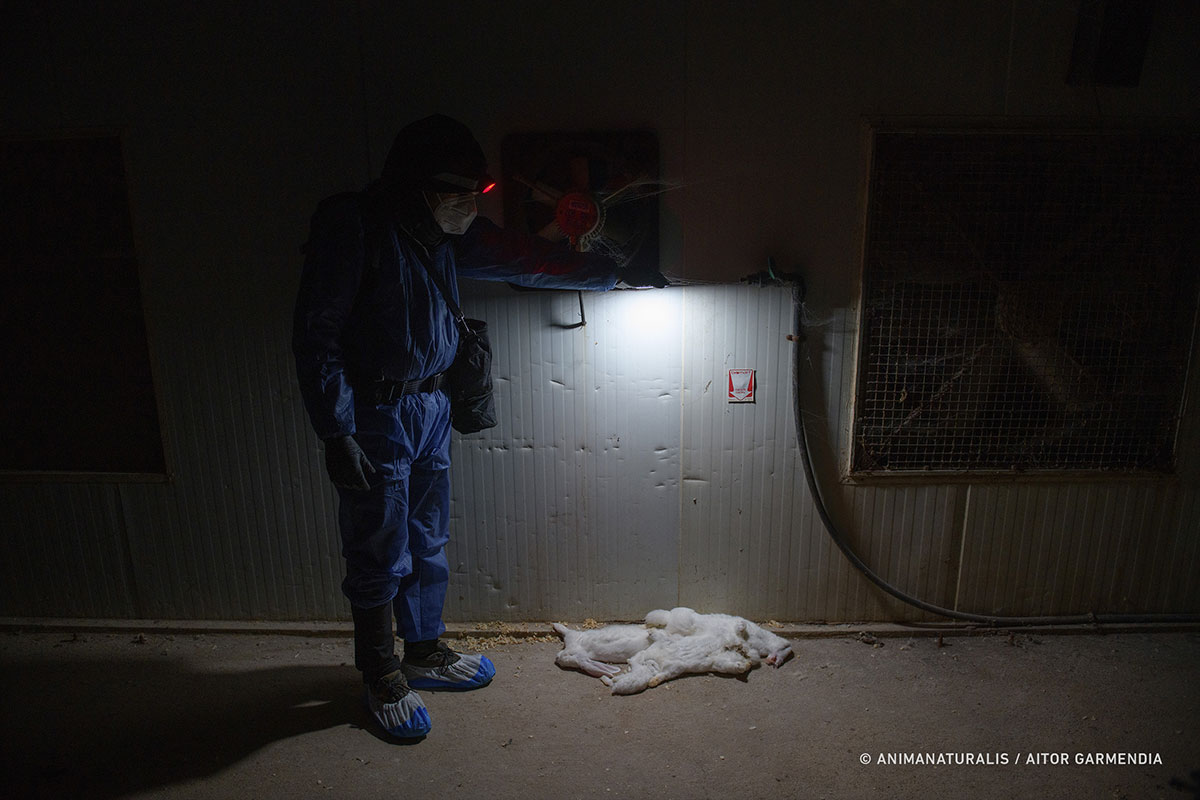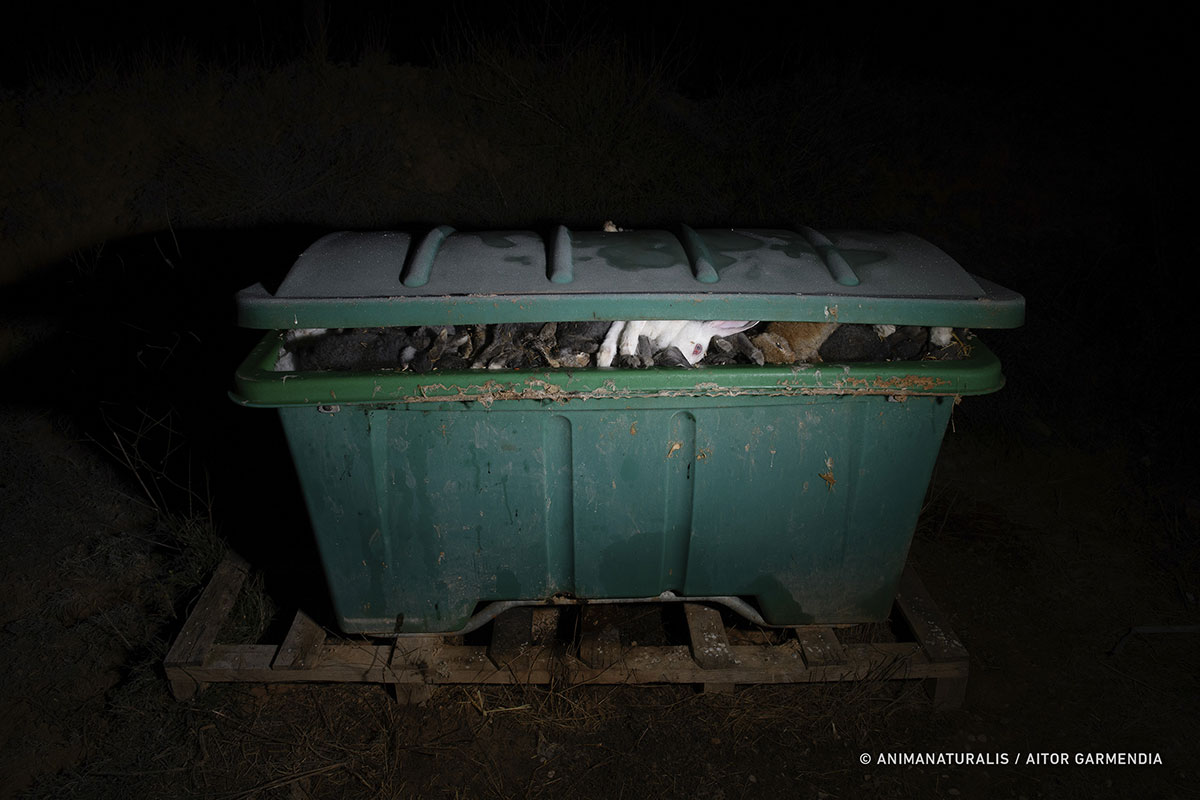Rabbit slaughter on spanish factory farms
At around 5 months of age, when rabbits weigh between 2.5 and 3 kg, they are considered to have reached the optimal weight for sale and face the final stage of a lifetime of suffering: slaughter. The minimum age for slaughtering a rabbit on the farm itself is 35 days. However, in industrial processes, rabbits are killed and marketed as young as 28 to 32 days old, when they only weigh around 500 grams.

Stunning before slaughter is mandatory, and the most common methods in the European Union include electrical stunning and mechanical stunning with penetrating and non-penetrating captive bolts, a tool that delivers a sharp blow to the forehead and may or may not pass through the skull . As soon as any of these methods are applied, the rabbits should be bled within 10 minutes. When these methods fail, rabbits are cut or broken while still alive, fully aware of the pain.
Neck breaking is often used to euthanize rabbits because it is quick and cost-effective, but it requires skill and practice. If operators are not properly trained or are not careful with the technique, they can cause a slow and agonizing death for the rabbits.

The EFSA also identified a dozen consequences for the well-being of rabbits that can occur at the time of slaughter, such as the risk of not losing consciousness, not dying on the first attempt, prolonging their suffering, experiencing thermal stress, thirst, prolonged hunger, restricted movement, pain, fear, distress, and difficulty breathing.
